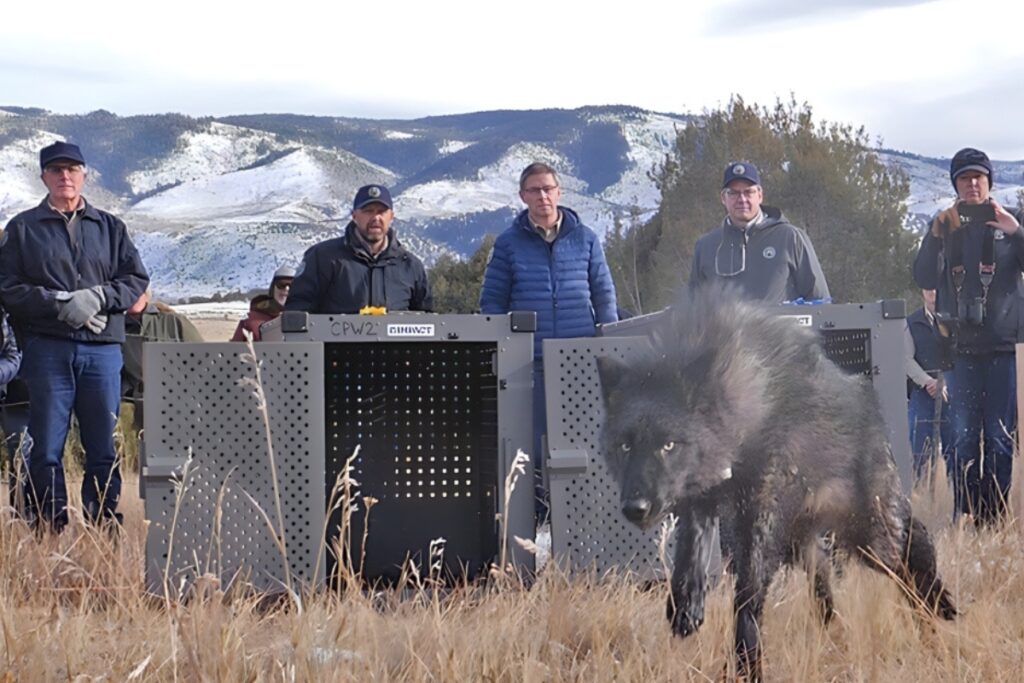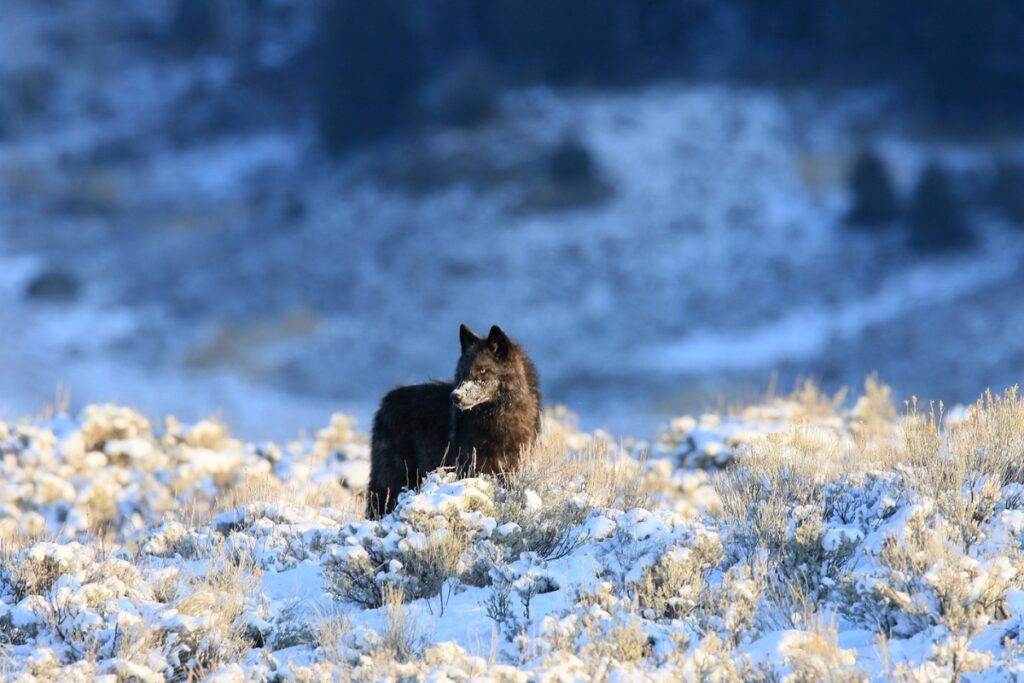
In the rugged landscape of Colorado, a fierce debate has been brewing between two powerful forces: livestock ranchers and gray wolves. The controversy has only deepened since Colorado voters narrowly approved Proposition 114 in 2020, which mandated the reintroduction of gray wolves by 2023. Urban voters largely championed the measure, seeing wolves as symbols of wilderness and ecological balance. But ranchers and livestock advocates in rural Colorado fear a darker side to the reintroduction: the wolves’ potential to wreak havoc on their livelihoods.
A Rocky Start for Reintroduction Efforts
Since Colorado Parks and Wildlife (CPW) began reintroducing wolves in late 2023, the process has been far from smooth. Just nine months in, three out of the ten wolves released have died, raising concerns about the feasibility and ethics of the program. The first casualty, a male wolf, was found dead with puncture wounds likely caused by a mountain lion. More recently, an adult male from the Copper Creek pack died following complications from injuries determined not to be from trapping.

CPW has acknowledged these setbacks, explaining that “anticipated mortalities” were built into the restoration plan. However, the quick loss of three wolves has reignited the concerns of rural communities that already feared for the safety of their livestock. Meanwhile, conservation advocates argue that, despite the losses, reintroduction is essential for restoring Colorado’s natural balance.
Economic Impact and Rising Tensions
For ranchers, the economic impact of reintroduction is hard to ignore. Since wolves first migrated into Colorado naturally in 2021, CPW reports that wolves have killed at least 28 cattle, 12 sheep, and three dogs. Each incident can mean a significant financial setback for ranchers, who depend on livestock sales to keep their operations afloat. Though compensation programs are in place—offering up to $15,000 per animal for confirmed wolf kills—many ranchers argue that money alone doesn’t cover the broader impact. They cite the additional costs of wolf deterrence and the stress of living with an apex predator in their backyard.

Andy Spann, a fifth-generation rancher and president of the Gunnison County Stockgrowers’ Association, articulated these frustrations in a lawsuit claiming that agencies overseeing the reintroduction failed to conduct adequate environmental reviews under the National Environmental Policy Act (NEPA), risking “unintended negative consequences” for both the environment and local communities. Ranchers worry that the wolves’ presence could cause an exodus of livestock from wolf-prone areas, weakening the economic backbone of rural Colorado.
Conservationists Push Back
Conservation groups, on the other hand, argue that wolf reintroduction is not just about ecology; it’s about honoring the will of the people. Alli Henderson, Southern Rockies director of the Center for Biological Diversity, expressed frustration over the lawsuit, calling it a tactic to thwart the project. “Both science and Colorado voters have very clearly told us that wolves belong here,” Henderson stated. She also urged CPW to release the remaining wolves in the Copper Creek pack once the pups are strong enough, fearing that extended captivity may undermine their ability to thrive in the wild.
Supporters of wolf reintroduction highlight the broader environmental benefits seen in other states. For example, in Yellowstone National Park, reintroduced wolves help control elk populations, which allowed overgrazed vegetation to recover and stabilized riverbanks. Conservationists hope that wolves will have similar benefits in Colorado, where some areas face overgrazing issues from deer and elk.

A Legal Battle with Uncertain Outcomes
The dispute over Colorado wolves is being fought both in courtrooms and on the ground. In December 2023, the Colorado Cattlemen’s Association and Gunnison Stockgrowers’ Association sued CPW and the U.S. Fish and Wildlife Service, seeking to halt further reintroduction efforts. They initially pushed for a temporary restraining order to delay the release of additional wolves, citing concerns over livestock safety and economic impact.
However, Judge Regina Rodriguez sided with state and federal agencies, noting that the reintroduction plan aligns with the public’s vote. Her ruling stated that “The record before the Court does not substantiate the likelihood of imminent livestock losses, particularly in the context of a request for emergency relief.” The court’s stance emphasizes that compensation programs and state oversight would suffice to mitigate the risks to ranchers.
What’s Next for Colorado’s Wolves and Ranchers?
The reintroduction plan continues despite these clashes, with CPW aiming to release 30 to 50 wolves over the next few years. To meet this goal, CPW has partnered with Oregon, planning to capture 10 to 14 wild wolves per year and release them in Colorado between December and March. While Colorado officials are hopeful that the program will ultimately succeed, every new loss—whether of a wolf or a rancher’s livestock—adds to the tensions.

The future of Colorado’s wolves remains uncertain as biologists, ranchers, and conservationists alike grapple with the challenges of restoring an apex predator to a landscape that has changed dramatically since wolves last roamed it. For now, each side stands firmly rooted in its perspective, and the rest of Colorado watches to see whether wolves can indeed coexist with the cattle that have long defined the state’s rural economy.
Sources:
- Associated Press: Colorado cattle industry sues over wolf reintroduction on the cusp of the animals’ release
- Colorado Newsline: Colorado wolf reintroductions to begin within days after judge rejects cattle industry lawsuit
- The Colorado Sun: A third wolf released in Colorado’s reintroduction plan is dead, CPW says







